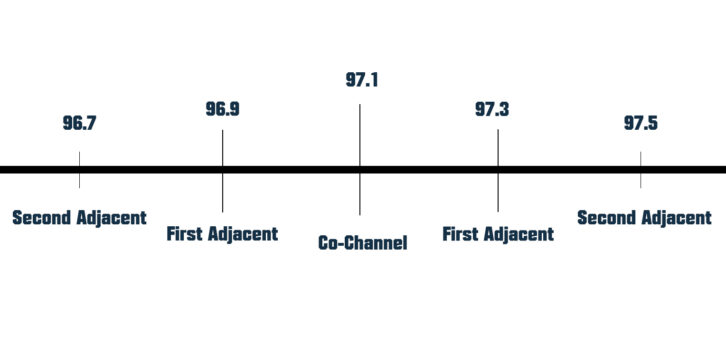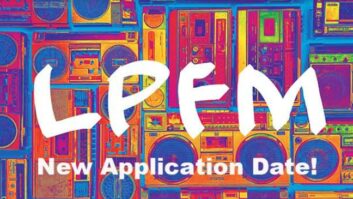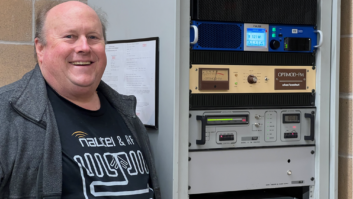Radio World has introduced a series of commentaries titled “Firing Up Frequencies,” intended for readers who may be interested in applying for a low-power FM station license during the FCC’s upcoming window, which was recently pushed back by five weeks. The following story is the sixth installment in the series.
The author is Sharon Scott, president and co-founder of ART FM, WXOX in Louisville, Ky. She is the author of the new book “Low-Power FM for Dummies.”

Once your nonprofit organization has decided to apply for a low-power FM frequency and you have connected with an advocate who can assist with your paperwork, you will need to gather all the required parts. There is not much time to pull everything together, but it is enough.
The Federal Communications Commission will open the application window Dec. 6–13. The official information on the LPFM service is available on the FCC website.
Find the necessary parts to assemble your LPFM application below:
State-Registered Organizational Documents or Government Charter
To fulfill this requirement, nonprofits can submit their Articles of Incorporation to the FCC with their LPFM application. If you still need to incorporate as a nonprofit with your state, hurry up! It only takes a couple of days, but you will need to keep a few specific details in mind. You can find instruction in this Radio World article: Taking It LPFM: Finding or Founding Your Nonprofit.
Federal 501(c)3 tax-exempt status is not required to apply for an LPFM license.
Names and Addresses of All Controlling Members
Each organization applying for an LPFM permit will need to give the FCC a list of its controlling members. Nonprofit organizations, for example, will provide a list of board members complete with residential addresses and voting percentages. Remember that to be considered local, either the organizational headquarters must be within 10 miles of the proposed transmitter site – OR – 75 percent of the board members must live within that radius. This area increases to 20 miles outside of Nielsen top 50 Radio Markets. A list of counties within the top 50 markets can be found on the REC Networks website.
Educational Statement
Each organization will have to provide an Educational Statement to the FCC with their LPFM application. This will describe, in some detail, the organization’s educational objectives and explain how the addition of a FM broadcast will help further those goals. Schools will want to include accreditation documents here. The FCC seeks evidence that some type of over-the-air instruction will be provided on the new LPFM station. Specific program examples should be included — even if they are just ideas — as well as a sample weekly schedule.
The FCC will not hold the group to any of the details in your educational statement, but they want to see how you are planning to use the frequency to illuminate your community. While your application will not be judged on the length or contents of its educational statement, the FCC will check to see that it is there and has some substance. This will become part of your organization’s public record.
Tower Site Assurance
Your organization must have a location for your transmission tower and reasonable assurance that you will be able to hang your antenna there. You will need to have the exact longitude and latitude coordinates for your site and submit them to the FCC. Any mistake here can disqualify your application.
Getting reasonable assurance means that you have spoken with the property owner and, in the FCC’s words, you have had a “meeting of the minds” — i.e. the landlord has stated that they are willing to provide you with a place to raise your antenna and, if necessary, build a tower. Remember, you will have three years to get established — or propose a better site to the FCC. You do not need a property contract. No need to get into expenses or lease terms yet as this could complicate the matter.
You do not even need a written agreement to include with your LPFM application, although you may want it for your own peace of mind. You must, however, provide the FCC with the name and phone number of the property owner. A competitor or agency representative may call them to confirm that they are aware of the application and are willing to provide the site for your FM transmission purposes.
[Related: “Grassroots Radio Conference Ignites the LPFM Movement“]
Selected Channel and Engineering Study (if required)
You can use the FCC Channel Finder to determine which — if any — frequencies are available in your area and at your specific tower-site location. You will select one of these channels based on factors such as possible interference and application competition.
All new FM stations must meet distance separations from the pre-existing stations on the dial. They may not broadcast on a frequency that has station on either of its neighboring, first adjacent channels. If an organization’s chosen frequency has a pre-existing station on either of the second adjacent channels — spots on the broadcast band that are two positions away (see diagram) — then an engineering waiver will be required with their application.
This study will provide scientific evidence that the new signal will not cause interference for listeners of the pre-existing stations. If this engineering waiver is required but not provided, the application will be automatically dismissed by the FCC with no opportunity for correction. Most organizations will need to hire a professional to complete this highly specialized work.

Common Frequency and the Prometheus Radio Project are two nonprofit groups with an engineering staff who can still help interested parties with new LPFM applications, but it is imperative that you connect with them ASAP.
With just one month to go, it is critical that you get all your ducks in a row. Once you are confident that your application is bullet-proof, you can begin developing a strategy for winning your frequency. Watch for the upcoming installment of Fire Up the Frequencies, in which we discuss MX situations — what they are and how you can come out on top!











